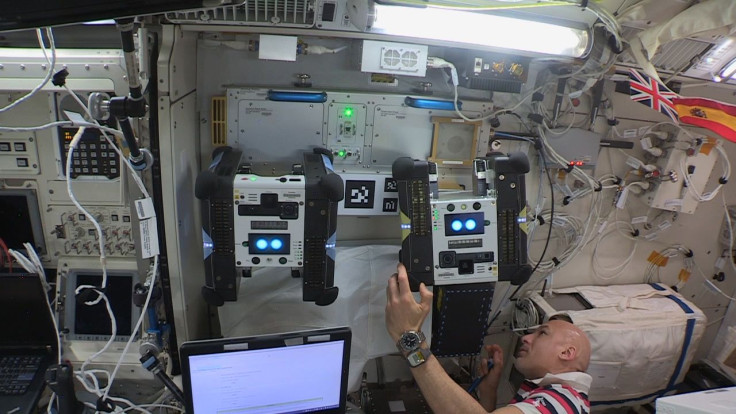NASA's Second Astrobee Robot Assistant Now Active Aboard ISS
For the first time in space, NASA’s second Astrobee Robot, Honey, is awake aboard the International Space Station (ISS), and European Space Agency (ESA) astronaut Luca Parmitano has already performed the initial tests. Honey is now sitting beside the first Astrobee Bumble, which was activated aboard the ISS in April.
Because Honey and Bumble’s systems are identical, Honey can take advantage of the data already gathered by Bumble for the past few months. In fact, Honey has already received Bumble’s mapping data of the station’s Kibo module, something Bumble had to perform a series of tests before its first solo flight in June.
That said, Honey will still have to go through various tests before it is ready to perform. The third Astrobee robot, Queen, will be the last to wake up in space.
Astrobee Robot System
Astrobee is a free-flying robot system of three robots and a docking station for charging. The robotic “teammates” aboard the ISS are meant to help the astronauts with their tasks, from basic chores to advancing research.
The robots are equipped with cameras and sensors to navigate their surroundings, arms to grasp onto handrails or grab onto things, and electric fans to help them move around efficiently in microgravity. They can perform autonomously or be controlled remotely by an astronaut to perform tasks such as taking inventories, documenting the experiments being carried out, or even moving cargo around the station.
With the assistance of the robots, the astronauts can focus more on the things that only humans can do, and less on routine duties that a robot assistant can. This way, tasks will be more efficient and it will be easier for the crew to juggle priorities and schedules.
Robots In Space
The Astrobee system is also helpful in gathering data about how robots can be useful in space. For instance, in the efforts to go back to the moon under the Artemis program or perhaps even in other deep space missions, using robot assistants can enhance productivity and help maintain a spacecraft even when the astronauts are not aboard.
The Astrobee system builds on the lessons learned from the SPHERES robots, which have been aboard the ISS for over 10 years. Once all three Astrobee robots are awake, they will replace SPHERES and open a new path for robot assistance in space.

© Copyright IBTimes 2024. All rights reserved.






















